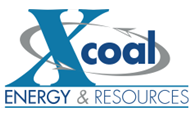
 











|
Signature Sponsor


October 16, 2025 - The Wyoming Black Butte mine expansion represents a pivotal development in American energy infrastructure, securing federal approval to extract 9.2 million tons of coal reserves from designated areas known as Pit 15 and Pit 10. Located in Sweetwater County within Wyoming's Green River Basin, this operation has maintained continuous production since 1977, establishing itself as a cornerstone of regional energy supply. Federal authorities expedited the approval process through streamlined National Environmental Policy Act procedures, demonstrating the current administration's commitment to domestic energy development. The expansion encompasses surface mining operations designed to maximise resource recovery while implementing comprehensive environmental stewardship protocols. Geographic and Operational ScopeThe Black Butte mine operates within Wyoming's sub-bituminous coal region, where favourable geological conditions enable efficient surface extraction methods. These coal deposits feature low sulphur content ranging from 0.2% to 0.8%, significantly below eastern coal varieties that typically contain 1% to 3% sulphur. This characteristic makes Wyoming coal particularly valuable for power generation applications requiring cleaner-burning fuel sources. Surface mining operations in this region benefit from low stripping ratios of 2:1 to 6:1, meaning relatively small amounts of overburden must be removed to access coal seams. This compares favourably to Appalachian operations that often require removing 15 to 25 cubic yards of material per ton of coal extracted. Timeline and Production ProjectionsMining operations under the expanded framework will continue through 2039, extending the mine's productive lifespan by nearly two decades. The approval enables systematic extraction from previously inaccessible federal coal deposits, utilising proven mining methodologies refined over the facility's 48-year operational history. Production planning incorporates modern resource management techniques that optimise extraction efficiency while maintaining environmental compliance standards. Furthermore, these techniques reflect broader industry evolution trends that emphasise technological advancement in mining operations. The mine's strategic location within established transportation networks ensures reliable coal delivery to regional power generation facilities. Job Creation and Economic Development OpportunitiesThe expansion will generate more than 50 additional employment positions, representing an 89% increase from the current workforce of 56 full-time employees. This employment growth extends beyond direct mining positions to encompass specialised roles in equipment operation, environmental monitoring, safety management, and technical support services. Wyoming's coal mining industry maintains the highest per-capita mining employment among U.S. states, with approximately 6,000 workers employed directly in coal extraction operations statewide. The average annual wage for coal mining positions in Wyoming reaches $92,000, significantly exceeding regional median incomes and providing substantial economic benefits to local communities. Skills and Training RequirementsModern surface mining operations demand specialised expertise in advanced equipment operation, including:
Training programmes align with Mine Safety and Health Administration requirements, emphasising equipment proficiency, hazard recognition, and environmental compliance procedures. Workers receive comprehensive instruction in collision avoidance systems, fatigue monitoring protocols, and emergency communication procedures. Regional Economic Multiplier EffectsEconomic research indicates that each mining position supports approximately 3.3 additional jobs in the broader regional economy, according to National Mining Association analysis. These indirect positions span transportation services, equipment maintenance, supply chain management, and local retail sectors. The expanded workforce will generate an estimated $4.6 million in additional annual wages, based on average Wyoming coal mining compensation levels. This income circulates through local economies, supporting businesses and services throughout Sweetwater County and surrounding areas. Federal Approval Mechanisms and Environmental ReviewThe Department of Interior utilised alternative arrangements under the National Environmental Policy Act to expedite project approval while maintaining comprehensive environmental assessment standards. This streamlined approach reflects current federal energy policy priorities emphasising domestic resource development and reduced regulatory timelines. The Office of Surface Mining Reclamation and Enforcement completed environmental review procedures in significantly reduced timeframes compared to standard processes that typically require 12 to 24 months for Environmental Impact Statements. Alternative arrangements can reduce approval timelines by 40% to 60% while preserving environmental protection requirements. Public Engagement and Comment PeriodsThe regulatory framework included a 10-day public comment period and virtual public meeting, providing community input opportunities within an accelerated timeline. This approach balanced stakeholder engagement with efficient project progression, ensuring local concerns received consideration during the approval process. Virtual meeting formats expanded participation accessibility, enabling broader community involvement regardless of geographic constraints or scheduling limitations. Digital engagement platforms facilitated comprehensive information sharing and responsive dialogue between federal agencies and local stakeholders. For instance, federal officials highlighted the importance of maintaining Wyoming's mining industry leadership in national energy production. Environmental Stewardship RequirementsFederal approval mandates comprehensive land restoration following extraction completion, requiring operators to restore mined areas to original contours or approved alternative configurations. The Surface Mining Control and Reclamation Act establishes specific reclamation standards including:
Wyoming has successfully reclaimed over 200,000 acres of previously mined land since 1977, demonstrating proven capability in post-mining landscape restoration within challenging semi-arid environmental conditions. Additionally, mine reclamation innovation continues to enhance restoration techniques across the industry. Primary Energy Infrastructure ConnectionsThe Jim Bridger Power Plant serves as the exclusive recipient of coal production from Black Butte mining operations, creating an integrated energy supply system that has operated reliably for nearly five decades. This 2,120-megawatt facility comprises four coal-fired generating units, each rated at 530 megawatts capacity. Operated by PacifiCorp, a subsidiary of Berkshire Hathaway Energy, the Jim Bridger facility provides electricity to approximately 2 million customers across six western states: Utah, Wyoming, Idaho, Oregon, Washington, and California. Annual coal consumption reaches 5 to 6 million tons from multiple regional suppliers. Energy Security and Grid ReliabilityCoal-fired generation provides essential baseload power capacity, operating at consistent output levels regardless of weather conditions or time of day. This reliability supports Western Interconnection grid stability during peak demand periods and seasonal variations in renewable energy production. Wyoming coal plants generated approximately 28,000 gigawatt-hours of electricity during 2024, representing significant regional generation capacity. Coal-fired facilities typically achieve capacity factors between 40% and 75%, providing dependable electricity supply when grid demand fluctuations require consistent baseload support. Transportation and Logistics NetworksBlack Butte mine utilises truck transportation to deliver coal approximately 30 miles to the Jim Bridger Power Plant, minimising transportation costs and delivery timeframes. Established haul routes connect mining operations to generation facilities through dedicated transportation infrastructure designed for heavy industrial loads. This integrated logistics system ensures efficient coal delivery while reducing transportation-related environmental impacts compared to longer-distance rail or barge transportation methods. Direct mine-to-plant delivery eliminates intermediate handling and storage requirements. Strategic Energy Independence ObjectivesThe Wyoming Black Butte mine expansion aligns directly with federal energy dominance strategies emphasising domestic resource development and reduced dependence on energy imports. Secretary of the Interior Doug Burgum characterised the approval as strengthening national Energy Dominance through responsible federal coal resource utilisation. Federal coal production from public lands totaled approximately 250 million tons during 2024, representing significant domestic energy resource contributions. Wyoming accounts for roughly 42% of total U.S. coal production, maintaining its position as the nation's leading coal-producing state since 1988. Energy Dominance FrameworkCurrent federal energy policy emphasises maximising domestic production across multiple energy sources while maintaining market competitiveness and environmental responsibility. Coal extraction from federal lands generates substantial revenues through the federal coal leasing programme, contributing approximately $165 million annually to Wyoming through mineral royalty distributions. The Bureau of Land Management manages coal leasing on federal lands, with Wyoming containing approximately 40% of all federally-owned coal reserves. Federal coal royalty rates of 12.5% for surface-mined coal generate significant federal revenues while supporting state and local economic development. Regional Energy Infrastructure DevelopmentWyoming's strategic position as America's premier energy-producing state benefits from continued investment in coal extraction capabilities and transportation infrastructure. The state's energy sector represents approximately 20% of Wyoming's gross domestic product, supporting broader economic diversification efforts. Coal mining operations contribute substantially to state revenues through severance taxes totaling approximately $635 million in 2023, supporting educational funding, infrastructure development, and public services throughout Wyoming. However, the industry is increasingly adopting sustainable mining practices to balance economic needs with environmental responsibility. Comprehensive Environmental Management ProtocolsModern coal mining operations incorporate sophisticated environmental protection systems addressing air quality management, water resource conservation, wildlife habitat preservation, and soil conservation throughout extraction processes. These protocols exceed minimum regulatory requirements through voluntary implementation of enhanced environmental stewardship practices. The semi-arid climate conditions in Sweetwater County present unique environmental challenges, including limited precipitation averaging 7 to 10 inches annually and growing seasons spanning only 60 to 90 days. These conditions require specialised revegetation techniques utilising drought-resistant native plant species. |
 








|